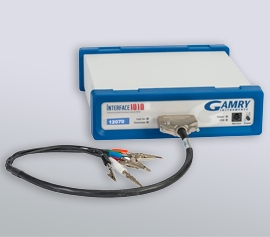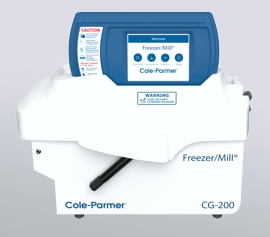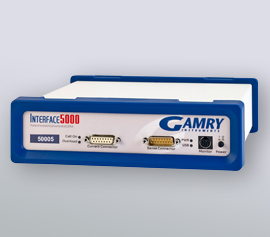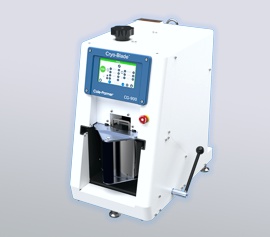CRYOGENIC GRINDERS
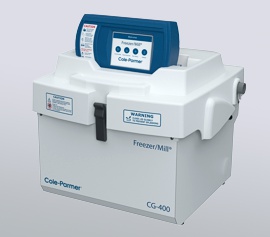
The Cole-Parmer CG-400 Freezer/Mill® Cryogenic Grinder (formerly SPEX 6785 Freezer/Mill) - the first choice for grinding sample quantities from 0.1 to 100g for temperature sensitive samples or samples that cannot be ground at room temperature.
The basic model in the Cole-Parmer Freezer/Mill range requires manual filling with liquid nitrogen. Continuous cooling of the sample container in liquid nitrogen, robust mechanics with only one moving part and intuitive touch screen operation ensure maximum efficiency and durability.
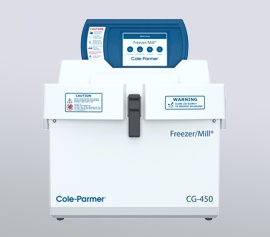
The Cole-Parmer CG-450 Freezer/Mill® cryogenic grinder (formerly SPEX 6875 Freezer/Mill) – including the Auto-Fill – function. The first choice for grinding sample quantities between 0.1 and 100g in the case of temperature-sensitive samples or samples that are impossible to grind at room temperature.
The sister model of the CG-400 is filled with liquid nitrogen automatically. The permanent cooling of the sample container in liquid nitrogen, the robust mechanics with only one moving part and the intuitive touchscreen operation ensure maximum efficiency and durability.
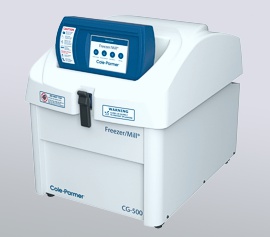
The CG-500 Freezer/Mill® is a high-throughput, dual chamber, cryogenic grinder. It accommodates samples in the 0.1 to 200g range (100g per grinding chamber). Each grinding chamber can hold one large grinding vial or four standard grinding vials. Sample vial maintains cryogenic temperatures due to continuous immersion in liquid nitrogen.
When performance matters: The top model from the Freezer/Mill series offers two grinding chambers, two pre-cooling chambers and the choice of manual or automatic filling with liquid nitrogen. The permanent cooling, the robust mechanics and the intuitive touchscreen operation ensure maximum efficiency and durability.
POTENTIOSTAT / GALVANOSTAT
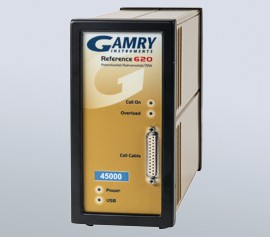
The latest development in the Reference 600 series - the Reference 620 - features 20-bit analog/digital conversion, gaining about a decade of additional sensitivity. This makes the system the first choice for demanding applications, e.g. in basic research.
The Reference 620 offers eleven current ranges between 60 pA - 600 mA at a maximum of ± 12 V at the working electrode. Two additional gain stages (10x / 100x) extend to an even broader current range of 13 decades, allowing electrochemical impedance spectroscopy (EIS) on very high ohmic surrogates between 5 MHz and 10 µHz with current resolutions down to 20 aA per bit using state-of-the-art microelectronics and oversampling. Careful selection of electronic components and design result in...
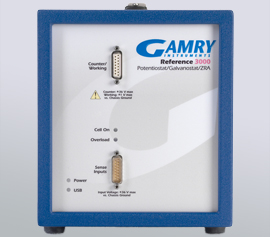
The high-end potentiostat for all demanding applications in electrochemistry from very low to high currents.
The Reference 3000 offers eleven current ranges between 300 pA - 3000 mA at a maximum of either ±3A@±15V or ±1.5A@±32V at the working electrode. Two additional gain stages (10x / 100x) extend to an even broader current range of 13 decades, allowing electrochemical impedance spectroscopy (EIS) on very high ohmic surrogates between 1 MHz and 10 µHz with current resolutions down to 100 aA per bit using state-of-the-art microelectronics and oversampling. Careful selection of electronic components and design result...
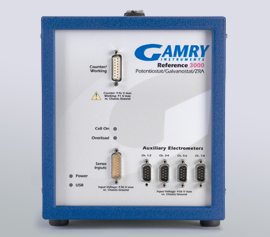
The well-known high-end Reference 3000AE Potentiostat/Galvanostat/ZRA with eight additional auxiliary electrometers (AE).
With the eight additional channels of the Auxiliary Electrometer (AE) add-on option of the Reference 3000 Potentiostat / Galvanostat / ZRA, potential differences of either eight individual half cells of a stack or up to eight peripherical signal transducers can be measured. Each of the eight available electrometers (± 5 V vs. counter electrode potential) can clarify the impedance of a half cell in an electrochemical impedance spectroscopy measurement performed over the entire stack or to simply measure eight additional...
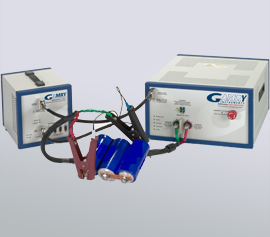
The Reference 3000 (AE) Potentiostat/Galvanostat/ZRA high performance and multi-purpose basic unit can be combined with the Reference 30k Booster and is ideal for evaluating new highest-level technologies for batteries, fuel cells, supercapacitors and high turnover electrochemical synthesis.
The Reference 3000 is already a high-performance system, but with the addition of the Reference 30k booster, it can serve even more demanding applications. You can therefore make a valuable contribution at the highest level in basic research, electrochemical synthesis, and electrochemical energy storage. The Reference 3000 basic instrument can either be equipped later with 8 additional auxiliary electrometers (AE; Auxilliary Electrometer) by means of a hardware upgrade, or you can opt for the Reference 3000AE.
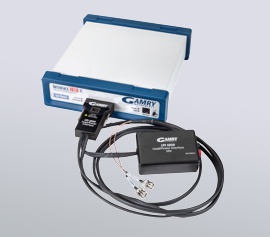
Interface for loads and power supplies for EIS characterization of batteries and fuel cells available in three versions (10 V, 100 V and 1000 V)
Alternatives to fossil fuel energy sources are becoming more and more prevalent, and fuel cells and batteries are playing an important role in energy storage and conversion of these alternatives. However, their future success depends on continuously improving efficiency and performance, which you can now do much better with Gamry's LPI1010 Load- / Power-Supply Interface.
HIGH-POWER POTENTIOSTATS
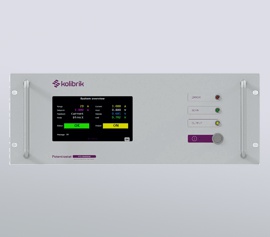
The PTC series is used for measurements with high current requirements, e.g. for the characterisation of electrolysers or fuel cells
The 4-quadrant potentiostats/galvanostats of the PTC series are available with four power ranges up to max. ±100A@±5V. Impedance spectroscopy (EIS) is possible via two channels between 1 mHz and 100 kHz. This means that tasks in general electrochemical synthesis, from water splitting and alkaline CO2 conversion to fuel cells and other energy storage and conversion concepts, can also be successfully mastered on larger surfaces with higher material conversion and higher current requirements.
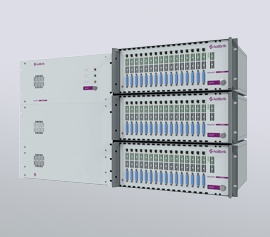
Modular configurable multi-channel (up to 1000 individual cells) impedance test stand for fuel cell and electrolysis cell stacks as well as Li-ion and redox flow battery packs
The MegaEIS multi-channel electrometer/impedance spectroscopy test stand enables the characterisation and optimisation of up to 1000 individual cells, e.g. of a fuel cell or electrolysis cell stack up to 1000 V / 2000 A within a power limit of 250 kW. For tasks in general electrochemical synthesis from water splitting and alkaline CO2 conversion to fuel cells and other energy storage and conversion concepts - also on an industrial scale.
POTENTIOSTAT - MULTI-CHANNEL SYSTEMS
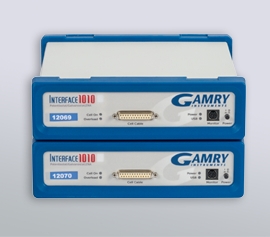
The Interface 1010 Bipotentiostat System from Gamry is compact, flexible, and inexpensive for all kinds of electrochemical measurements using two channels.
Each channel of the Interface 1010 bipotentiostat with its eleven current ranges including 10x / 100x gain record currents from 100 pA to 1 A at ± 12 V working electrode potential. The Interface 1010 Bipotentiostat is shipped including a special cable for synchronization. Since the systems are floating from protective ground, synchronous operation without mutual interference is possible.
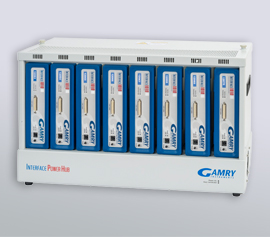
Multi-channel systems are ideal for any application where significance can be increased by higher experimental throughput.
With the multi-channel potentiostat from Gamry, a single system can be flexibly configured from many channels for research purposes with high significance. Flexibility means to operate each channel individually, in groups or all together. Each channel covers either a current range from 100 pA to 1 A (IFC1010) or from 500 nA to 5 A (IFC5000) and can maintain a maximum potential of either ± 12V (IFC1010) or ± 6V (IFC5000) at the working electrode.
